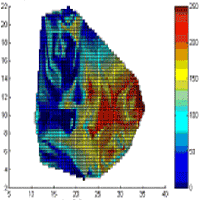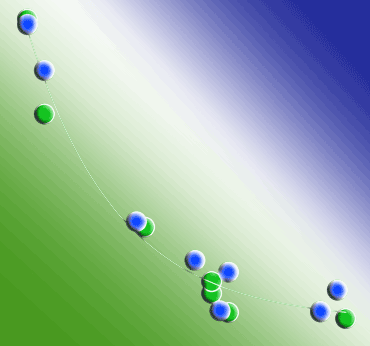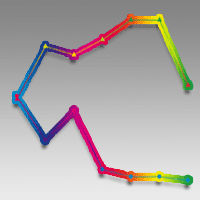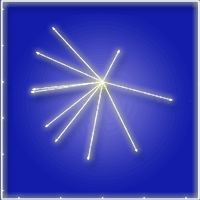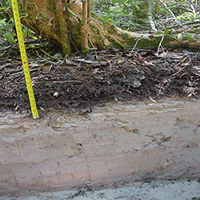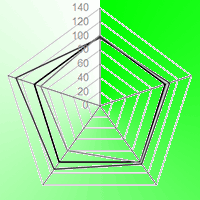
Physiological performance and growth of Viburnum tinus L. on phytoremediated sediments for plant nursing purpose
Francesca Ugolini (1) , Costanza Calzolari (1), Giuseppe Mario Lanini (1), Luciano Massetti (1), Francesco Sabatini (1), Fabrizio Ungaro (1), Stefania Damiano (2), Carlos Garcia Izquierdo (3), Cristina Macci (4), Grazia Masciandaro (4)
iForest - Biogeosciences and Forestry, Volume 10, Issue 1, Pages 55-63 (2016)
doi: https://doi.org/10.3832/ifor1840-009
Published: Jun 23, 2016 - Copyright © 2016 SISEF
Research Articles
Collection/Special Issue: IUFRO RG7.01.00 - Nice (France 2015)
Global Challenges of Air Pollution and Climate Change to Forests
Guest Editors: Elena Paoletti, Pierre Sicard
Abstract
Sediments are fundamental resources for productive activities like plant nursing, which are also likely to be responsible of their loss. In contrast, other activities like the dredging of canals and waterways involve the extraction and continuous accumulation of sediments. Most dredged sediments are polluted, and need to be stocked and transported to landfills, with extremely high costs for transport and management. To address these problems, a low-cost remediation methodology was previously developed to decontaminate sediments which were tested for use in plant nursery field plantations located in Pistoia (Italy). The phytoremediated sediments were mixed in percentages of 33% and 50% with alluvial soil, which itself was used as control. We studied the characteristics of these mixtures, and the physiological response and growth of Viburnum tinus L. grown on each substrate, as well as its corresponding root ball. Substrates with sediments showed quick water infiltration and no waterlogging, in sharp contrast to what was observed in autumn in the control. Despite a rainy summer, V. tinus demonstrated a good acclimation to the different substrates, showing the lowest leaf water potentials in mixed substrates and no signs of stress. No differences in leaf carbon assimilation or transpiration were observed among substrates, while in late August plants grown on substrates with sediments showed a higher performance index for energy conservation from photons absorbed by PSII to the reduction of intersystem electron acceptors. In the 50% mixture, there was also an enhancement of electron transport from PSII to PSI. Moreover, no differences in growth and biomass were found. Plants in all substrates showed some thin-root mortality, likely due to the persistent rainfall, though a higher number of plants with dead roots was observed in control. Thanks to the dense and fibrous root apparatus of V. tinus, the mixture with 33% sediments produced satisfactory results even for the root ball, resulting in less deformation and a lower breakage percentage.
Keywords
Biomass, Field Plantations, Leaf Gas Exchanges, Plant Nursing, PSII Efficiency, Root Balls, Sediments
Authors’ Info
Authors’ address
Costanza Calzolari
Giuseppe Mario Lanini
Luciano Massetti
Francesco Sabatini
Fabrizio Ungaro
Institute of Biometeorology-CNR, v. G. Caproni 8, I-50145 Firenze (Italy)
Department of Biology, University of Florence, v. Micheli 1, I-50121 Firenze (Italy)
Consejo Superior de Investigaciones Científica - Centro de Edafología y Biología Applicada del Segura, Campus Espinardo, Murcia (Spain)
Grazia Masciandaro
Institute of Ecosystem Study-CNR, Area di Ricerca di Pisa, v. Moruzzi 1, I-56124 Pisa (Italy)
Corresponding author
Paper Info
Citation
Ugolini F, Calzolari C, Lanini GM, Massetti L, Sabatini F, Ungaro F, Damiano S, Izquierdo CG, Macci C, Masciandaro G (2016). Physiological performance and growth of Viburnum tinus L. on phytoremediated sediments for plant nursing purpose. iForest 10: 55-63. - doi: 10.3832/ifor1840-009
Academic Editor
Elena Paoletti
Paper history
Received: Aug 31, 2015
Accepted: Mar 05, 2016
First online: Jun 23, 2016
Publication Date: Feb 28, 2017
Publication Time: 3.67 months
Copyright Information
© SISEF - The Italian Society of Silviculture and Forest Ecology 2016
Open Access
This article is distributed under the terms of the Creative Commons Attribution-Non Commercial 4.0 International (https://creativecommons.org/licenses/by-nc/4.0/), which permits unrestricted use, distribution, and reproduction in any medium, provided you give appropriate credit to the original author(s) and the source, provide a link to the Creative Commons license, and indicate if changes were made.
Web Metrics
Breakdown by View Type
Article Usage
Total Article Views: 49139
(from publication date up to now)
Breakdown by View Type
HTML Page Views: 41709
Abstract Page Views: 2587
PDF Downloads: 3544
Citation/Reference Downloads: 44
XML Downloads: 1255
Web Metrics
Days since publication: 3462
Overall contacts: 49139
Avg. contacts per week: 99.36
Citation Metrics
Article Citations
Article citations are based on data periodically collected from the Clarivate Web of Science web site
(last update: Mar 2025)
Total number of cites (since 2017): 1
Average cites per year: 0.11
Publication Metrics
by Dimensions ©
Articles citing this article
List of the papers citing this article based on CrossRef Cited-by.
References
Valutazione dell’impatto ambientale delle pratiche vivaistiche e studio della vulnerabilità intrinseca della falda nel territorio pistoiese. [Environmental impact assessment of plant nursing and study of the intrinsic vulnerability of the water table in the Pistoia territory]. Osservatorio sul vivaismo, Comune di Pistoia, Pistoia, Italy, pp. 151. [in Italian]
Gscholar
Creating the urban forest: the bare root method. Cornell University, Ithaca, NY, USA, pp. 16.
Gscholar
Misurare la vitalità delle piante per mezzo della fluorescenza della clorofilla. [Measuring plants vitality through chlorophyll fluorescence]. Firenze University Press, Firenze, Italy, pp. 138. [in Italian]
Gscholar
Development of branching index for evaluation of peach seedlings using interspecific hybrids. Hortscience 45: 852-856.
Gscholar
Techniques of propagation by cuttings. In: “Hartmann and Kester’s plant propagation: principles and practices (8th edn)” (Davies FT, Geneve RL, Kester DE eds). Pearson Education Inc., Prentice Hall, NJ, USA, pp. 344-415.
Gscholar
Agricultural reuse of polluted dredged sediments: the AGRIPORT European project. In: Proceedings of the “IWA - XII International Conference of Wetland System for Water Pollution Control” (Bresciani R, Zanieri L eds). Venezia (Italy) 4-7 Oct 2010. Palombi Editori, Roma, Italy, pp. 472-479.
Gscholar
Effects of transplanting on the growth and survival of nursery stock. HortScience 43 (4): 1239-1239.
Gscholar
Control of water balance in transplanted trees. Journal of Arboriculture 1: 1-10.
Gscholar
Innovative technique to recover contaminate driver sediments (CLEANSED LIFE 12ENV/IT/000652). In: Proceedings of the “15th International Waste Management and Landfill Symposium, Sardinia 2015” (Cossu R, He P, Kjeldsen P, Matsufuji Y, Reinhart D, Stegmann R eds). S. Margherita di Pula (CA, Italy), 5-9 Oct 2015. CISA Publisher, Cagliari, Italy, pp. 477.
Online | Gscholar
Saturated and field-saturated water flow parameters. In: “Methods of Soil Analysis, Part 4. Physical Methods” (Dane J, Topp C eds). SSSA, Madison, WI, USA, pp. 797-878.
Gscholar
The fluorescence transient as a tool to characterize and screen photosynthetic samples. In: “Probing Photosynthesis: Mechanisms, Regulation and Adaptation” (Yunus M, Pathre U, Mohanty P eds). Taylor and Francis, London, UK, pp. 445-483.
Online | Gscholar
Analysis of the chlorophyll a fluorescence transient. In: “Advances in photosynthesis and respiration series. Chlorophyll fluorescence: A signature of photosynthesis” (Papageorgiou GC, Govindjee eds). Springer, Dordrecht, Netherlands, pp. 321-362.
CrossRef | Gscholar
Another future for hydro ways sediments. In: Proceedings of the “15th International Waste Management and Landfill Symposium, Sardinia 2015” (Cossu R, He P, Kjeldsen P, Matsufuji Y, Reinhart D, Stegmann R eds). S. Margherita di Pula (CA, Italy), 5-9 Oct 2015. CISA Publisher, Cagliari, Italy, pp. 477.
Gscholar
Principles and practice of planting trees and shrubs. International Society of Arboriculture, Champaign, IL, USA, pp. 200.
Gscholar





